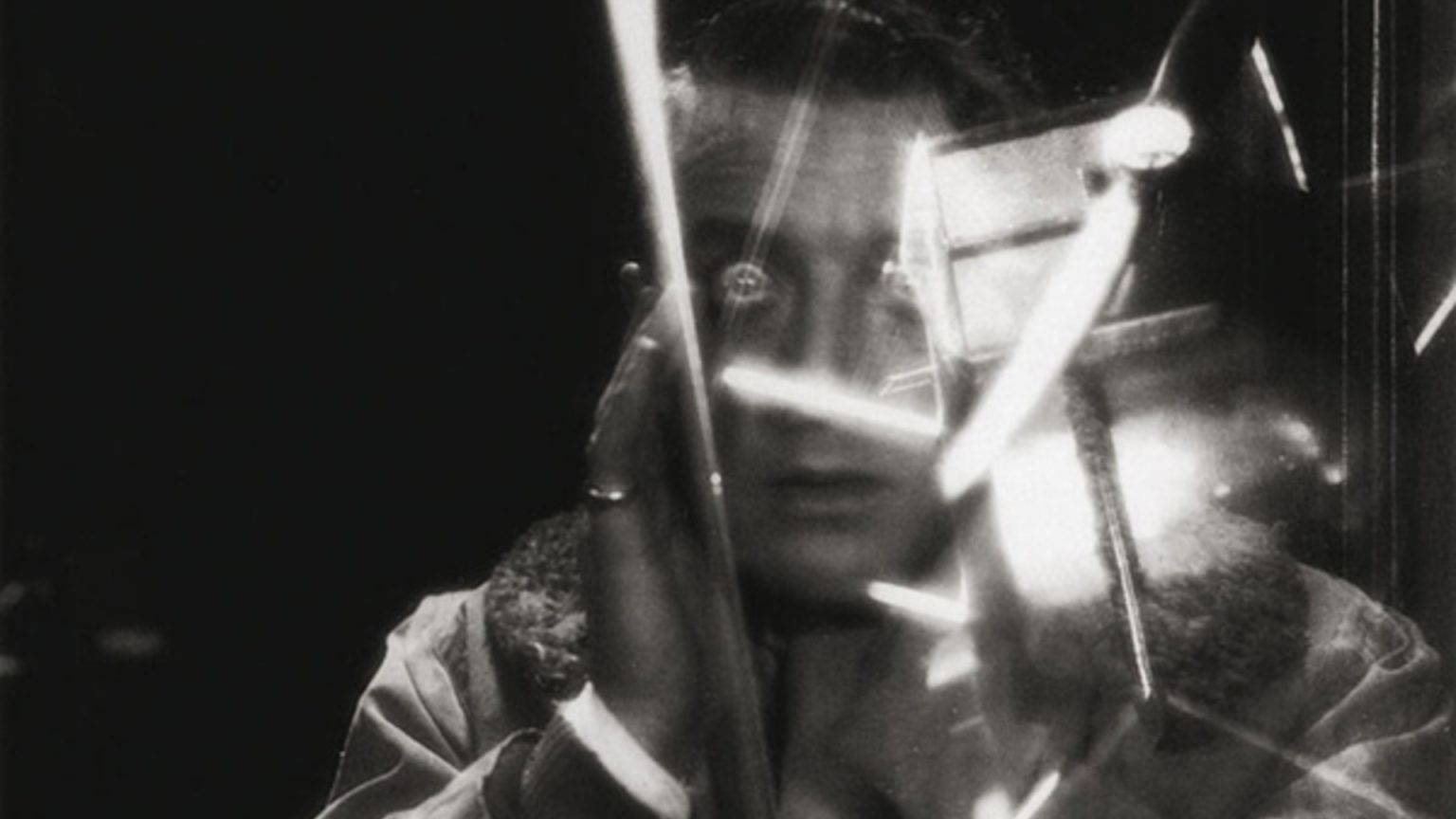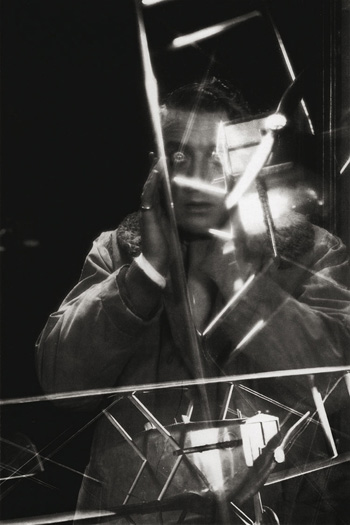“Looking at the careers of some film directors, there is one movie, one immense credit, that stands out from all the rest,” writes Dan Callahan. “With Paul Fejos, that movie is Lonesome (1928). With Jean Grémillon, that movie is Gueule d’amour (1937). And with Marcel L’Herbier, the standout credit is L’Argent (1928), a three-hour epic about high finance, based on a Zola novel, that was the most expensive French film up to that time…. L’Argent belongs to that last group of silent features, like Sunrise (1927), The Crowd (1928), Underworld (1927), The Wind (1928) and Pandora’s Box (1928), which brought the film art of that era to its height, but it also feels different from those movies, more futuristic, more modern, and that has a lot to do with how it plays as a graphic experience.”
Also at the Chiseler, Jim Knipfel on Boris Ingster’s Stranger on the 3rd Floor (1940).
“The dozen obstinately weird and wild films of Kira Muratova… are described by some critics as Russian to the core, and I wouldn’t hesitate to call her the greatest living Russian filmmaker,” wrote Jonathan Rosenbaum in 1995. “Yet I’m not entirely sure what ‘Russian’ means these days or how it applies to her.”
“Robin Wood’s appreciation of director Satyajit Ray’s most famous work, the Apu Trilogy, has been long out of print,” notes Omar Ahmed. “Wood’s groundbreaking study, first published in 1972 in the UK, was one of the first serious critical readings of the Apu Trilogy. It is almost impossible to find a copy of Wood’s book today or overstate its worth…. I’ve read a lot of books and articles on Ray, and have also published some writings on Ray…. Wood’s analysis of the Apu Trilogy is still one of the best, if not the most profound I have come across.”
Straight Outta Compton, which has handily won this weekend’s race at the box office and is currently scoring 78/100 at Critics Round Up, “is so beholden to the appeasement of so many artists and legacies and estates that none of it coheres as a movie,” argues Wesley Morris at Grantland. “There’s no point of view—just the masculinized version of the generically entertaining bitchery you find on nighttime soaps. But should the story of five gangsta-rappers from Compton feel this much like Melrose Place?” Related listening (80’30”). New York Times music critic Jon Caramanica discusses the film with Reginald C. Dennis, “who from 1990-4 worked at The Source, most prominently as music editor, and was a founding editor of XXL.”
In the Washington Post, Dennis Drabelle reviews Brian De Palma’s Split-Screen: A Life in Film: “Rather than lay down a biographical foundation at the outset, [Douglas Keesey] introduces elements of De Palma’s private life as they crop up in his movies: 29 in all, which Keesey summarizes and analyzes in chronological order…. This works better than one might expect because, more than most directors, De Palma pours his psyche into his work.”
Trailer for DJ Spooky’s Rebirth of a Nation
“There’s a sense in which Wild at Heart [1990] is more a film on the cusp, for in it we see [David] Lynch testing the waters, poking here and there, making his way toward the farther-out worlds of Lost Highway [1997], Mulholland Drive [2001] and Inland Empire [2006],” suggests Robert C. Cumbow at the House Next Door.
“Today, at 95, Maureen O’Hara is a living testament to the enduring power of the Golden Age of Hollywood,” writes Eliza Berman for Life. “But there’s more to her than glamor, as she wrote in the first pages of her 2004 autobiography, ‘Tis Herself: ‘Above all else, deep in my soul,’ she declared, ‘I’m a tough Irishwoman.’ Born in Dublin on Aug. 17, 1920, O’Hara got her break with the 1939 Alfred Hitchcock film Jamaica Inn and went on to appear in more than 50 movies.”
David Cairns, who’s been celebrating the work of Richard Lester for most of this month, segues into “Seventies Science Fiction Week” at Shadowplay with an entry on The Bed Sitting Room (1970) featuring commentary from Rita Tushingham, cinematographer David Watkin and Lester himself.
At In Media Res, Shane Denson launches Found Footage Art Week with his audiovisual essay, “VHS Found Footage and the Material Horrors of Post-Cinematic Images” (5’02”).
For Mediático, Ignacio M. Sanchez Prado writes up “15 Great Post-1988 Mexican Films You Have Not Seen But Definitely Should.”
Daisy Woodward celebrates some of the finest examples of modernist architecture in cinema at AnOther.
INTERVIEWS
For Vice, Amelia Abraham calls up John Waters to talk about some of his favorite British films, among them, Joseph Losey‘s Boom! (1968) with Elizabeth Taylor and Richard Burton and Freddie Francis‘s Trog (1970) with Joan Crawford. Abraham and Waters chat about “the star quality of Crawford, the eternal appeal of Taylor and the influence they had on his own leading lady, Divine.”
Steve Erickson introduces an interview at Studio Daily: “Flying around Sudan (and later South Sudan) for a number of years in Sputnik, a decrepit homemade plane, Austrian-French director Hubert Sauper‘s We Come as Friends offers a survey of neocolonialism and how it’s damaged Africa.”
In the Notebook, Daniel Kasman talks with Chantal Akerman about No Home Movie and Zach Lewis talks with Nadav Lapid about The Kindergarten Teacher (2014).
For RogerEbert.com, Jim Hemphill talks with Peter Bogdanovich about She’s Funny That Way.
Katherine Cusumano chats with Rebecca Hall for Interview.
IN OTHER NEWS
New York Times film critic A.O. Scott has a book coming out in February, Better Living Through Criticism: How to Think about Art, Pleasure, Beauty, and Truth.
Todd Haynes, Cate Blanchett and Rooney Mara will be in London on October 14 when the 59th BFI London Film Festival presents the UK premiere of Carol.
DokuFest 2015 has wrapped in Prizren, Kosovo, and “was dedicated to the theme of Migration with films from all over the world and the Balkan region, masterclasses, workshops, debates and panel discussions.” And the award-winners have been announced.
GOINGS ON
New York. Tomorrow evening’s program at Light Industry, Why Couldn’t She Have Two Lives?, features Julie Dash’s Illusions (1983), Leah Gilliam’s Sapphire and the Slave Girl (195), Howardena Pindell’s Free, White, and 21 (1980) and Cauleen Smith’s Chronicles of a Lying Spirit (by Kelly Gabron) (1992).
IN THE WORKS
“After having kicked off on 23 July in Aix-en-Provence, the shoot for Polina, the feature debut by choreographer Angelin Preljocaj and his wife, Valérie Müller, is now continuing in Paris until 15 September,” reports Fabien Lemercier at Cineuropa. “The cast includes young Russian dancer Nastya Shevtzoda and French megastar Juliette Binoche (…currently filming for Ma loute by Bruno Dumont). They are joined by such names as Niels Schneider, Jérémie Belingard and Aleksei Guskov.”
LISTENING
Zach Lewis has launched a new podcast, Auteur Museum, “dedicated to investigating those who shaped film history.” In the inaugural episode, Lewis and Keith Uhlich discuss Michael Mann.
Brandon Colvin discusses acting, his own films Sabbatical and Frames and Jean-Luc Godard‘s Hail Mary (1985) on the latest episode of The Cinephiliacs (84’36”).
Illusion Travels By Streetcar #68: When Douglas Sirk Was Detlef Sierck (1935-1937) (101’05”).
For news and tips throughout the day every day, follow @KeyframeDaily. Get Keyframe Daily in your inbox by signing in at fandor.com/daily.





